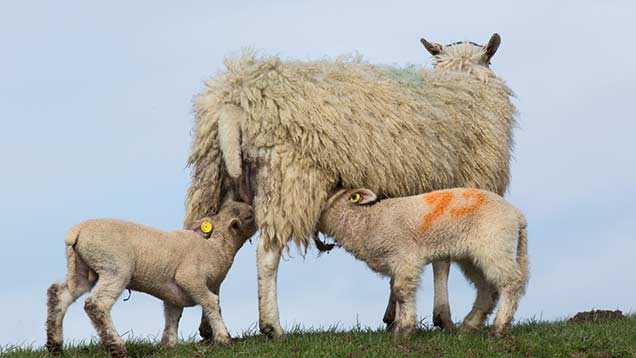Top causes of sheep udder lumps revealed in university study
 © Tim Scrivener
© Tim Scrivener Poor ewe udder conformation, acute mastitis, inadequate nutrition in pregnancy and teat lesions are leading causes of udder lumps, according to a research project conducted by the University of Warwick.
As part of a AHDB Beef & Lamb funded project researchers scored nearly 5,000 pedigree and commercial ewes four times.
See also: How to prevent mastitis at weaning
They assessed teat position, teat angle, udder drop and examined udders for lumps, four weeks before lambing and nine weeks after giving birth, over two consecutive breeding seasons.
Results showed:
- Acute mastitis was more likely to develop in ewes with poor udder conformation and teat lesions.
- Ewes with big or extremely positioned teats and droopy udders were linked to an increase in teat lesions, udder lumps, acute mastitis or slower growing lambs. This was more prevalent in older ewes.
- Ewes that received inadequate nutrition in pregnancy and those feeding twins or triplets were more likely to have acute mastitis.
- Older ewes were more prone to acute mastitis.
- Ewes that had acute mastitis were more likely to have a lump in their udder when examined in the same lactation.
- A lump detected at one examination was not always present at the next.
- Ewes with lumps detected early were more likely to have a lump at a later stage.
- The higher the percentage of ewes in a flock with lumps during pregnancy, the higher the number of ewes with lumps in lactation, suggesting that the infection is passed within the flock.
AHDB Beef & Lamb senior livestock scientist Dr Liz Genever said the results highlight the importance of knowing a flocks’ udder health status and should help inform culling decisions.
“The project highlights the continued need for udder conformation to be part of the culling decision.
“It also highlights the fact that mastitis is a flock disease rather than just an individual’s disease, so the next steps are to look at reducing transmission within a flock.”
The project’s final report will be turned into a research document – part of the BRP+ range – for release later in the year.
